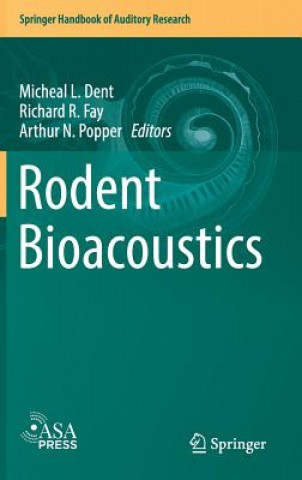
Kód: 19382030
Rodent Bioacoustics
Autor Micheal L. Dent, Richard R. Fay, Arthur N. Popper
By far, the most widely used subjects in psychological and biological research today are rodents. Although rats and mice comprise the largest group of animals used in research, there are over 2,000 species and 27 families of roden ... celý popis
- Jazyk:
 Angličtina
Angličtina - Vazba: Pevná
- Počet stran: 221
Nakladatelství: Springer International Publishing AG, 2018
- Více informací o knize

5094 Kč

Skladem u dodavatele v malém množství
Odesíláme za 14-18 dnů
Potřebujete více kusů?Máte-li zájem o více kusů, prověřte, prosím, nejprve dostupnost titulu na naši zákaznické podpoře.
Přidat mezi přání
Mohlo by se vám také líbit
-
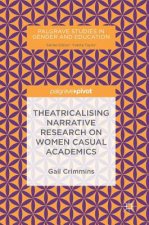
Theatricalising Narrative Research on Women Casual Academics
1681 Kč -

Mammals of the Neotropics
2387 Kč -

Mammals of South America
3816 Kč -

Mammals of the Neotropics
2693 Kč -

Law of Karma
647 Kč -

Creativity and Sexuality
5172 Kč
Dárkový poukaz: Radost zaručena
- Darujte poukaz v libovolné hodnotě a my se postaráme o zbytek.
- Poukaz se vztahuje na celou naši nabídku.
- Elektronický poukaz vytisknete z e-mailu a můžete ihned darovat.
- Platnost poukazu je 12 měsíců od data vystavení.
Více informací o knize Rodent Bioacoustics
Nákupem získáte 509 bodů
 Anotace knihy
Anotace knihy
By far, the most widely used subjects in psychological and biological research today are rodents. Although rats and mice comprise the largest group of animals used in research, there are over 2,000 species and 27 families of rodents, living all over the world (except Antarctica) and thriving in many different habitat types. The vast environmental diversity that rodents face has led to numerous adaptations for communication, including vocalizing and hearing in both the sonic and ultrasonic ranges, effectively communicating in the open air and underground, and using vocalizations for coordinating sexual behavior, for mother-pup interactions, and for signaling an alarming situation to the group. Some rodent species have even developed foot drumming behaviors for communication. Comparative studies from around the globe, using both field and laboratory methodologies, reveal the vast differences in acoustic communication behavior across many rodent species. Some rodents are amenable to training and have been domesticated and bred purely for research purposes. Since the early 1900s, rats and mice have been indispensable to research programs around the world. Thus, much of what we know about hearing and vocalizations in rodents come from these two species tested in the laboratory. The sequencing of the mouse genome in 2002, followed by the rat genome in 2004, only increased the utility of these animals as research subjects since genetically engineered strains mimicking human diseases and disorders could be developed more easily. In the laboratory, rats and mice are used as models for human communication and hearing disorders and are involved in studies on hearing loss and prevention, hormones, and auditory plasticity, to name a few. We know that certain strains of mice retain hearing better than others throughout their lifespan, and about the genes involved in those differences. We know about the effects of noise, hormones, sex, aging, and circadian rhythms on hearing in mice and other rodents. We also know about normal hearing in many families of rodents, including the perception of simple and complex stimuli and the anatomy and physiology of hearing and sound localization. The importance of acoustic communication to these animals, as well as the significance of these mammals to biomedical research, are summarized in the chapters.
 Parametry knihy
Parametry knihy
Zařazení knihy Knihy v angličtině Mathematics & science Biology, life sciences Zoology & animal sciences
5094 Kč
- Plný název: Rodent Bioacoustics
- Autor: Micheal L. Dent, Richard R. Fay, Arthur N. Popper
- Jazyk:
 Angličtina
Angličtina - Vazba: Pevná
- Počet stran: 221
- EAN: 9783319924946
- ISBN: 331992494X
- ID: 19382030
- Nakladatelství: Springer International Publishing AG
- Hmotnost: 530 g
- Rozměry: 235 × 155 × 20 mm
- Datum vydání: 07. September 2018
Oblíbené z jiného soudku
-

Field Guide to the Birds of Cuba
585 Kč -
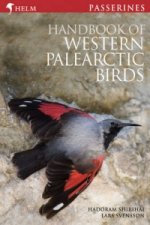
Handbook of Western Palearctic Birds
3884 Kč -

Mammals of Costa Rica
585 Kč -

Bach Flower Remedies For Animals
543 Kč -

Wolves
836 Kč -

Birds of Japan
1061 Kč -

Birds of Argentina and Southwest Atlantic V 1
996 Kč -

Fishes of Indiana
619 Kč -
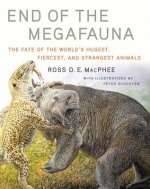
End of the Megafauna
836 Kč -

Reef Fish Identification
1103 Kč -

Essentials of Clinical Anatomy of the Equine Locomotor System
2170 Kč -

Complete Illustrated Encyclopedia of Birds of the World
548 Kč -

Complete Field Guide to Butterflies of Australia
1152 Kč -
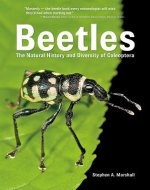
Beetles
1745 Kč -

Wisdom of Wolves
641 Kč -

In The Shadow Of Man
466 Kč -

Butterflies of North America
1521 Kč -

Anatomy of the Horse
1930 Kč -

Centipedes in Captivity
1720 Kč -

Nature of Horses
276 Kč -

Rise of Marine Mammals
2045 Kč -

Birds of Southeast Asia
679 Kč -
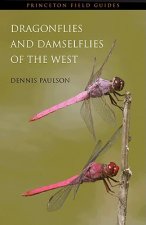
Dragonflies and Damselflies of the West
855 Kč -
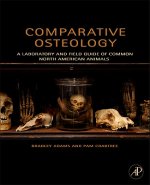
Comparative Osteology
1917 Kč -

Field Guide to the Birds of Thailand
1169 Kč -

Handbook of Larval Amphibians of the United States and Canada
2730 Kč -

Bumblebees
771 Kč -

Field Guide to the Birds of Hawaii and the Tropical Pacific
1246 Kč -
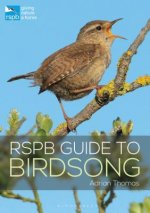
RSPB Guide to Birdsong
483 Kč -

Why Big Fierce Animals Are Rare
388 Kč -

Principles of Thermal Ecology: Temperature, Energy and Life
2368 Kč -

Sea Shells of India
1399 Kč -

Dance Language and Orientation of Bees
2044 Kč -

Solitary wasps
880 Kč -

Prairie Dog Empire
522 Kč -
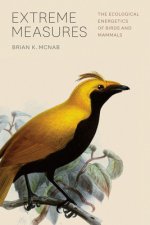
Extreme Measures - The Ecological Energetics of Birds and Mammals
1471 Kč -

National Audubon Society Guide to Marine Mammals of the World
852 Kč -

Tracks and Signs of the Animals and Birds of Britain and Europe
562 Kč -

Chimpanzee Politics
930 Kč -

Aqualog Freshwater Rays
671 Kč -

Birds of Mexico and Central America
623 Kč -

Fishes of the Maldives
1370 Kč -

Birds of Central Asia
1252 Kč -

Birds of Oman
1087 Kč -
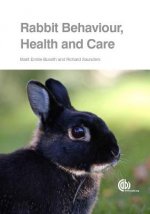
Rabbit Behaviour, Health and Care
736 Kč -

Turtles of the World
1741 Kč -

Are You My Mother?
222 Kč -

Lives of Bees
706 Kč -
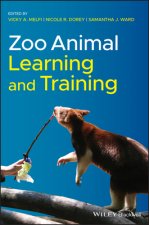
Zoo Animal Learning and Training
1716 Kč
Osobní odběr Praha, Brno a 12903 dalších
Copyright ©2008-24 nejlevnejsi-knihy.cz Všechna práva vyhrazenaSoukromíCookies


 Vrácení do měsíce
Vrácení do měsíce 571 999 099 (8-15.30h)
571 999 099 (8-15.30h)